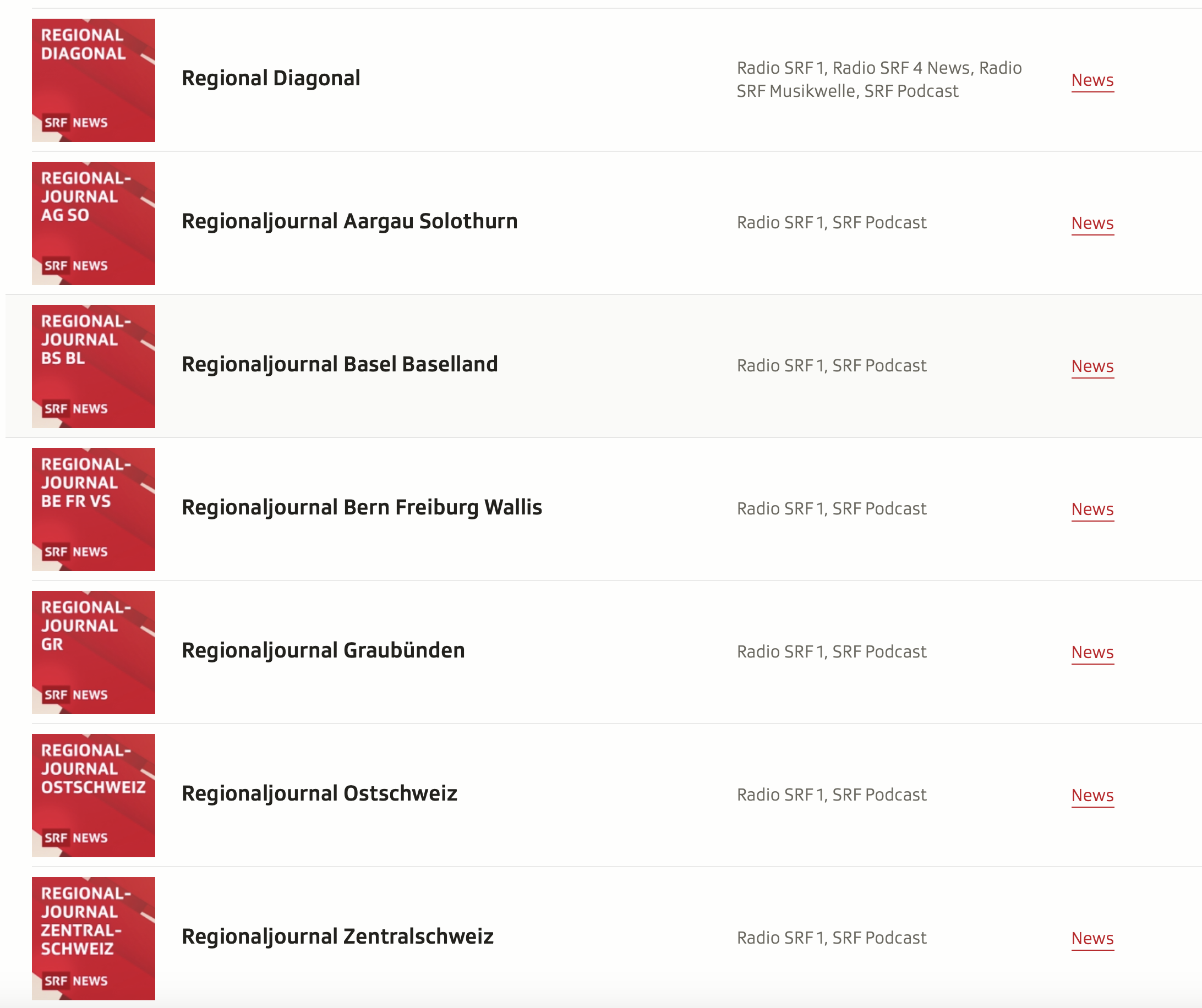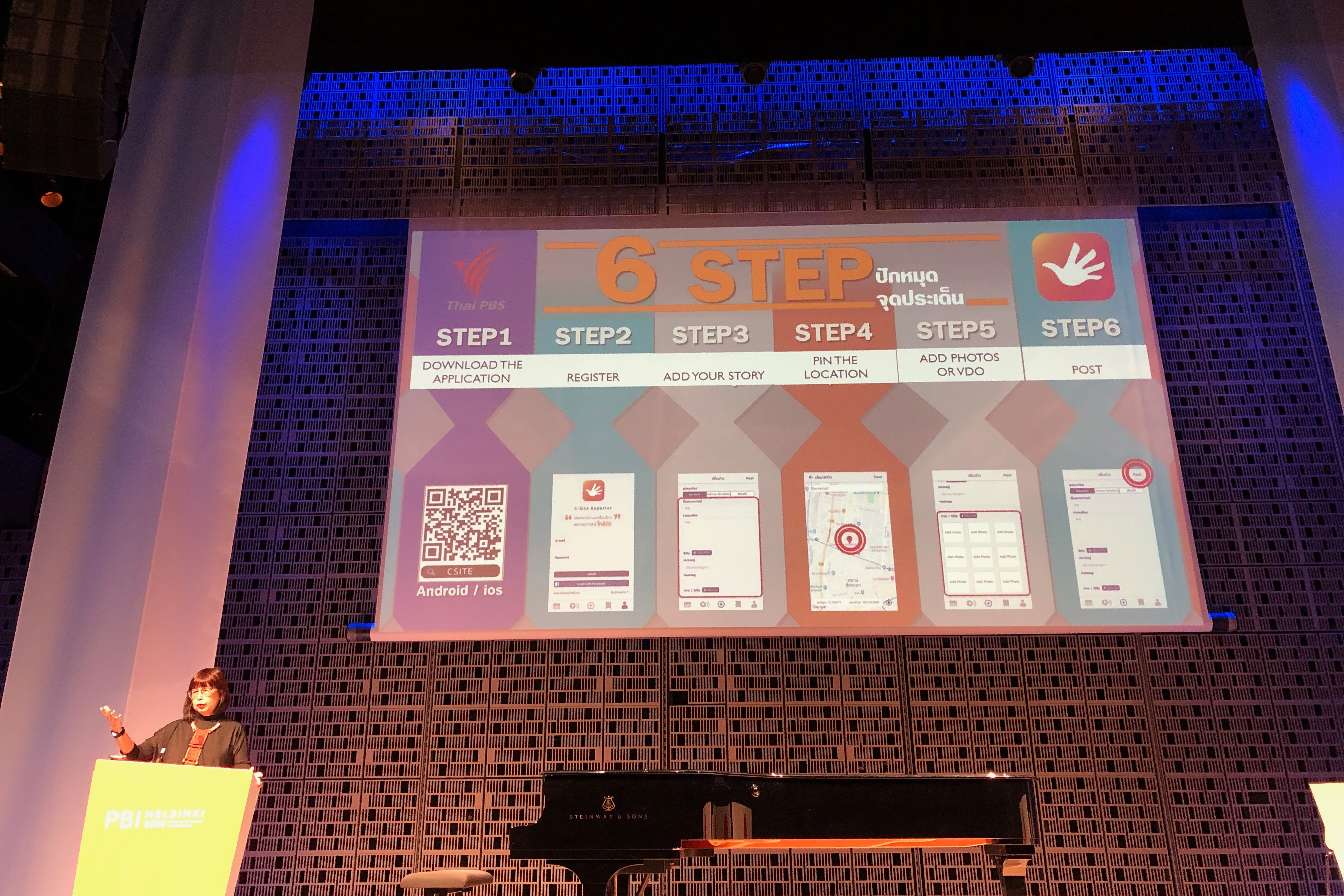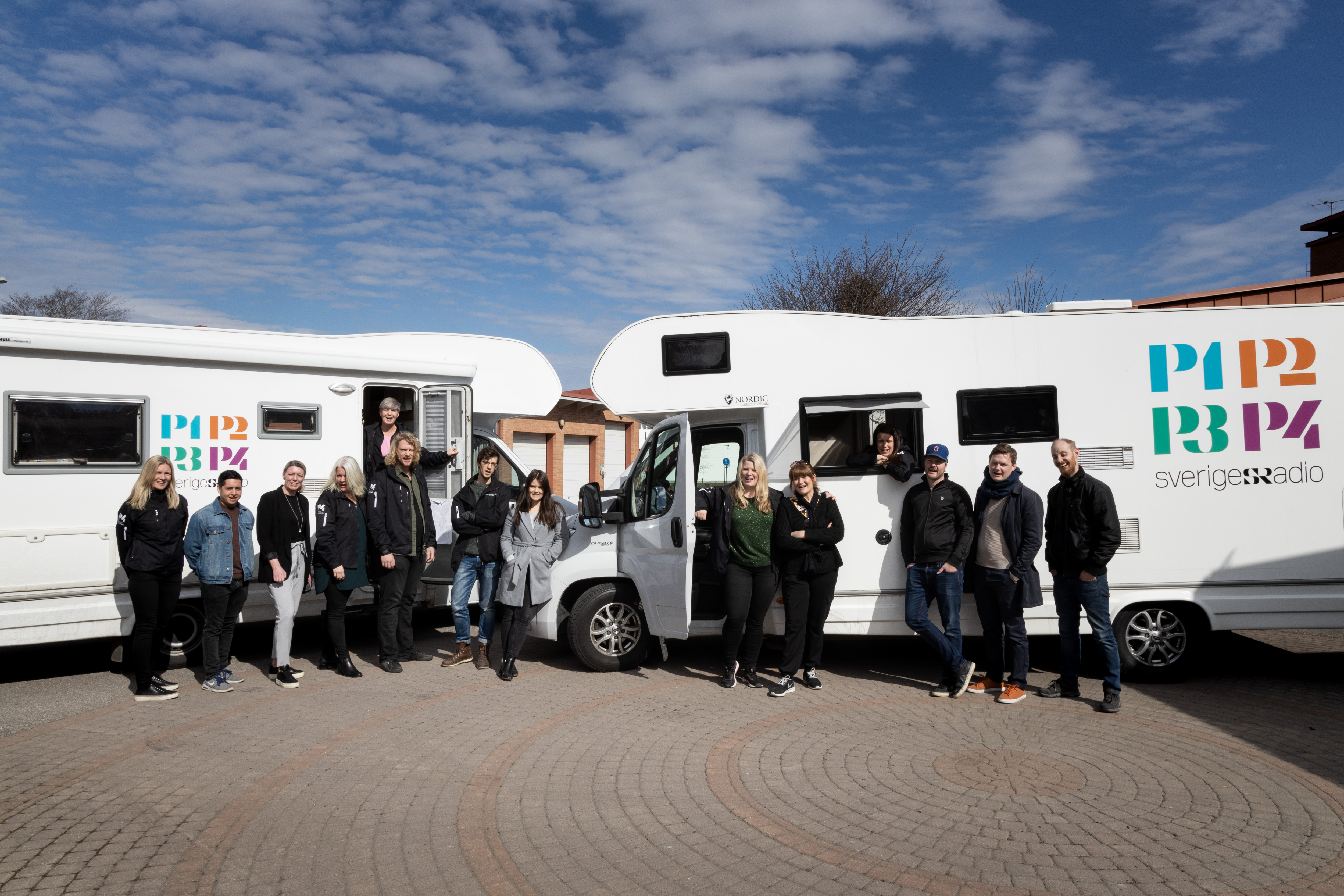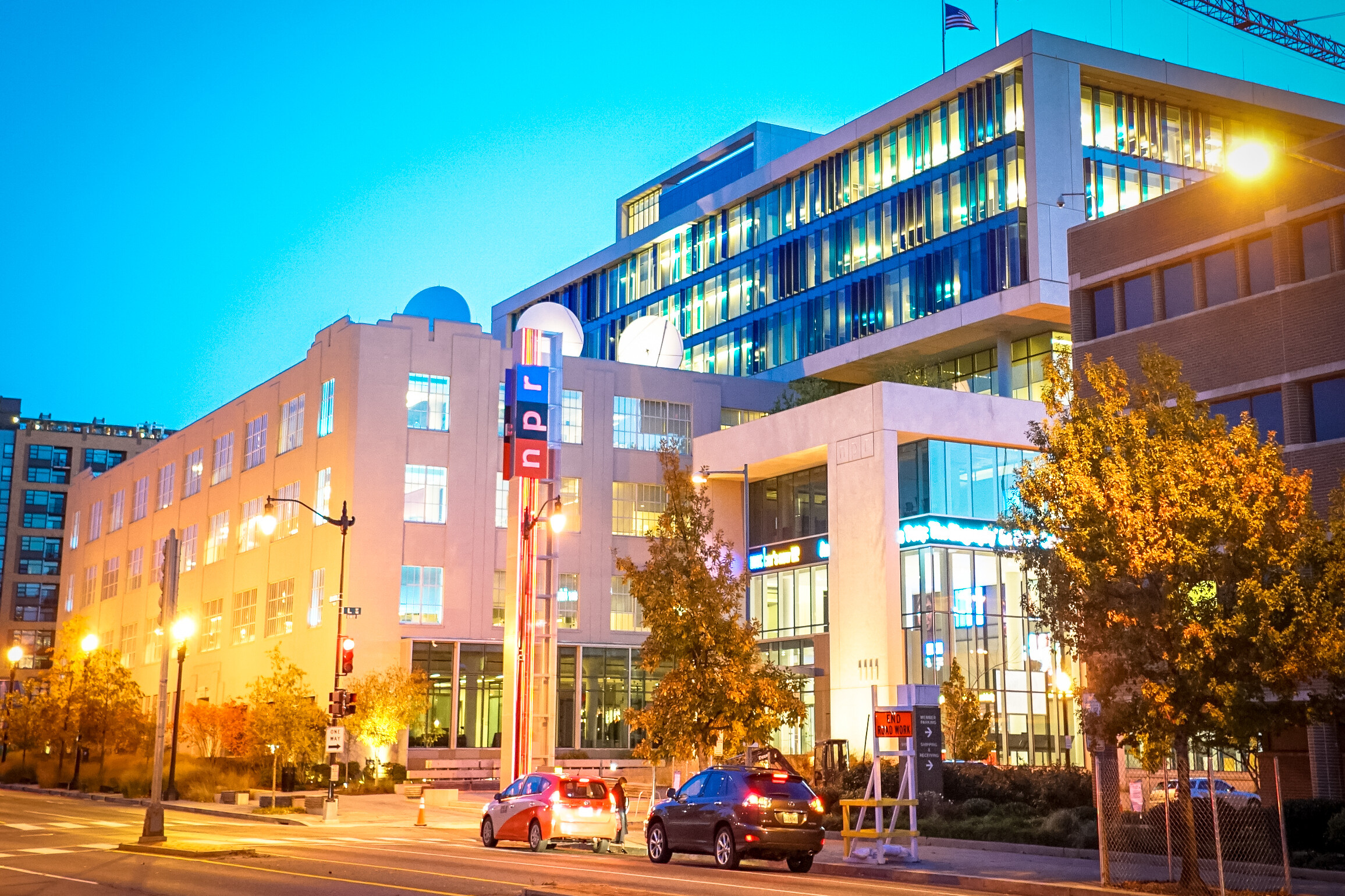Public radio has a long history of creating content that meets the changing needs of society while informing, educating, and entertaining listeners. But how is it adapting to provide a public service via podcasting?
By Desilon Daniels
We have seen, for example, how Radio France has invested in media education in response to the need for increased critical thinking, civic awareness, and a better understanding of sourcing news. Other public radio such as Sveriges Radio in Sweden and NPR in the US also emphasise their strong commitment to public service. In turn, millions across the globe continue to engage with and trust public radio. Particularly in moments of crisis, as with the ongoing COVID-19 pandemic, citizens – such as the 2 million who interacted with BBC radio stations since the UK’s first lockdown – are supporting public radio with their listenership and engagement.
One area public radio has excelled in is podcasting. Podcasting has been on the rise in the last few years as audiences fragment and seek out more on-demand content. According to the 2020 Reuters Institute Digital News Report, there has been an overall rise in monthly podcast access across 20 tracked countries since 2018, up from 29% in 2019 to 31% in 2020. In countries such as the United States, Sweden, Norway, Ireland, and Spain, almost four-in-ten people access podcasts monthly, with listenership ranging from 36% to 41%. Other nations such as the United Kingdom, Germany, and the Netherlands enjoy nearly a quarter of monthly listenership, ranging from 22% to 26%.
In light of such growth, this podcast series will showcase how public radio organisations are using podcasts to fulfil their remits and address societal needs in specific areas: children’s content, local news, and culture. This week, we focus on local news.
Podcasts on local news
Quality local journalism enables greater accountability and fosters democracy at a local level. It also brings stories and representations of people that are particularly relevant to specific communities. Ultimately, local journalism should function within a community, for that community.
But local news is under pressure. Funding remains a serious problem for both public and private media, with declining advertising revenue and more audiences moving online. Since 2004, more than 2,000 newspapers have closed in the US alone. While local public stations may fill the gap left in the wake of commercial closures and emerging news deserts, they too are struggling to maintain coverage of more complicated, investigative reports.
In light of these pressures, podcasts are proving to be a more affordable, manageable, and accessible way to reach audiences with specific coverage compared to live news. From the standpoint of many radio stations, they can utilise existing resources to create podcasts on local news, without the constraints and pressures of live recording. From the consumers’ standpoint, they are able to access a podcast almost anywhere at any time.
The growth in podcast consumption has also led to increased interest in advertising via this medium, thereby proving a profitable avenue for local news producers. A 2019 survey of UK advertisers and media agencies showed that 75% of respondents indicated their intention to increase their investment in podcast advertising over the following 12 months, broadcast regulator Ofcom reported.
This year has of course provided additional pressures for local news. Both COVID-19 and the global Black Lives Matter movement have brought with them challenges requiring a significant shift in the content produced by public media.
Read more: Coronavirus and local public media
Language, collaboration, relevance
By tackling specific themes via podcasts such as local language and identity in Switzerland; local social issues in the United States; and local politics in the United Kingdom, podcasts are enabling public media organisations to effectively cater to values such as independence, accessibility, diversity, and accountability.
In language-diverse Switzerland, its public broadcaster SRG SSR has enterprise units to cater to its language regions of German, French, Italian, and Romansch. These regions are not only unique in their languages but also in their identities.
Each unit comes with its own programming and they all produce a range of podcasts to cater to their specific audiences. Among these podcasts are those on local news, all in regional languages. For instance, at Schweizer Radio und Fernsehen (SRF), the German-language broadcaster, there are several regional journals which are “from the region, for the region”. Further, at SRG SSR’s Radio Télévision Suisse (RTS) unit, there is the ‘Local Colours’ podcast, which provides local news from French-speaking Switzerland.
In the United States, the country’s National Public Radio (NPR) is well-known for its podcast offerings. While NPR suffered a drop in its radio listenership due to the fall in commuters as a result of the pandemic, the organisation reported a record number of more than 57 million people tuning in weekly for news and other content, whether via radio or its digital platforms. Its podcast listenership, in particular, has increased.
“Podcast downloads and the usage of NPR’s listening apps are up nearly a quarter, and there is a 76% increase in users of NPR.org as more people access the network’s content from home. Additionally, for the first time, NPR is on track to make more money from underwriting on podcasts than on its conventional radio shows,” said CEO John Lansing. NPR’s podcast sponsorship revenue was projected even before the COVID-19 pandemic.
NPR has been particularly responsive to local news content this year, particularly in the way it highlights local social issues. In March, NPR launched Consider This as a coronavirus podcast. It was expanded in June to include a broader range of topics and was NPR’s fastest growing podcast, featuring major news stories of the day in less than 15 minutes.
Starting today we’re bringing you something new in the evenings — a podcast! On #NPRConsiderThis, Kelly McEvers and the hosts of All Things Considered will help you make sense of the news in 15 minutes or less. Find us here ?https://t.co/o9Ly0xhYR8
— All Things Considered (@npratc) June 29, 2020
.@NPR announces that later today #NPRConsiderThis will become the first localized daily news podcast ever, offering a mix of community and national news based on where the listener is at the #PodcastUpfront pic.twitter.com/7MjKFqJnMD
— IAB (@iab) September 9, 2020
In September at the IAB Upfront event, NPR announced it would work collaboratively with 12 member stations to turn Consider This into its first localised news podcast. This meant that listeners in participating regions would hear both national and local news segments, with the latter aiming to help listeners to contextualise national news and make sense of what is going on in their communities.
Meanwhile, at Radio Milwaukee, a new podcast is launched every year. This year, in response to the Black Lives Matter protests, the station launched a podcast, By Every Measure, on the city’s systemic racism.
“Milwaukee has a lot of indicators that make it pretty bad here for African-Americans. We wanted to have a conversation about that, but then not only tell the history, but we want to look at…who’s trying to change it.”
Tarik Moody, By Every Measure co-host
In the United Kingdom, the BBC has continued to invest in podcast production. Most recently, the BBC announced that its in-house radio production unit, BBC Audio, would now include a dedicated podcast development unit.
Furthermore, BBC’s expansive network is a key example of the relevance of local news, particularly in the area of politics. BBC has numerous local and regional news services, with programmes throughout the UK. However, local journalism in the UK is under threat. Earlier this year, the BBC announced cost-saving measures, including cuts, to regional TV news, local radio, and online news.
Many local and regional stations have created their own podcasts, such as BBC Yorkshire, which recently launchedYorkshirecast in early October. The podcast came at a time when the county was facing rising COVID-19 cases. It is meant to “[make] what happens in Westminster relevant to people in the North”. The podcast features guests from the region as well as insights from the BBC northern political team.
“Around 7.1 million people in the UK now listen to podcasts each week. That’s one in eight people and is an increase of 24% over the past year – and more than double over the past five years. Ofcom research also found that half of listeners have joined the podcast wave in the last two years.” – Ofcom 2019
As the positive trends continue in podcast usage, we can expect that public media will continue to produce relevant and diverse offerings, even beyond local news, children’s content, and cultural content. Doing so will demonstrate their continued commitment to universality, innovation, accountability, and excellence – all core values of public service media.
In the next part of this series, we will showcase how public media organisations are creating content for children, particularly as the global COVID-19 pandemic increases the need for more entertainment and education programmes.
Header Image: Close-up image of microphone in podcast studio. Source: nortonrsx/iStock
Related Posts
3rd December 2018
Best of PSM | NPR engaging younger audiences
Public radio in the US engages students…



